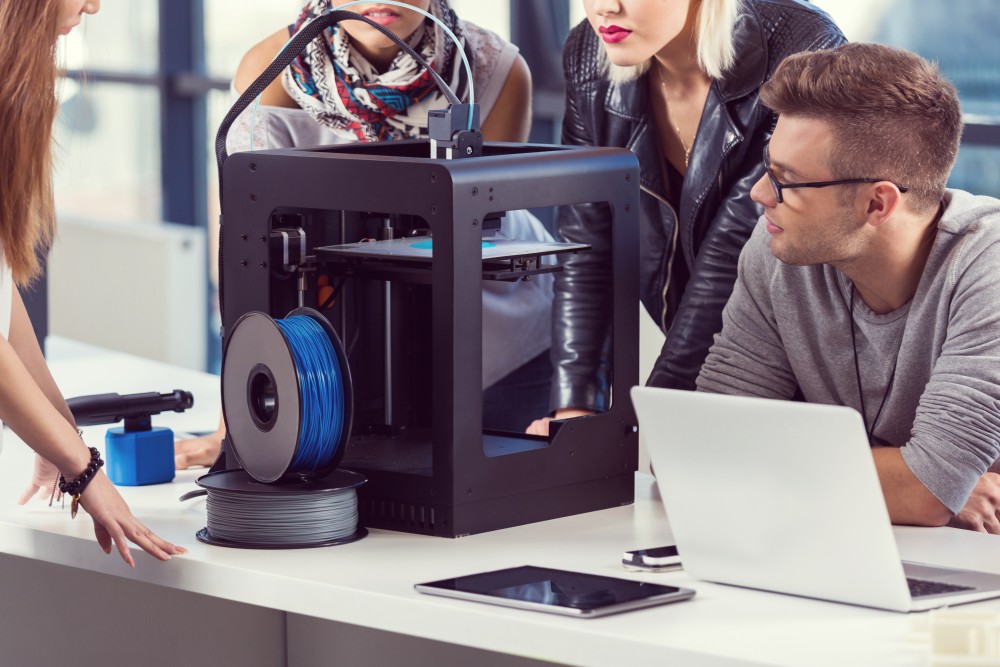The extensive lineup includes a variety of colors, materials, reel diameters and sizes to upgrade all types of 3D printed designs
element14 is expanding its line of Multicomp Pro offerings to include a variety of 3D printer filaments, catering to the diverse needs of design engineers, creators and hobbyists.
“We are thrilled to expand our Multicomp Pro product offerings, especially as the needs of our customer base evolve,” said Steve Jagger-Marsh Product Segment Leader, Private Label Test, Tools & Production Supplies, element14. “As interest and demand in 3D printing continues to grow, we are happy to provide our customers with a diversified lineup of 3D printer filaments that are designed to meet the quality standards engineers require and the value they need.”
The following products are now available exclusively from element14:
- PLA filament (Polylactic Acid) is a plastic material that is vegetable-based and is a fully biodegradable thermoplastic polymer consisting of renewable raw materials. PLA can be used for pattern making, tooling parts, prototypes, or end-use parts.
- ABS filament (Acrylonitrile Butadiene Styrene) is a popular filament type due to its good mechanical properties, low cost, toughness and great impact resistance. It can also withstand much higher temperatures than most 3D printing filaments.
- TPU (Thermoplastic Polyurethane) is a flexible, abrasion-resistant thermoplastic and is used in a number of manufacturing processes for both consumer and industrial use. Its rubber-like elasticity, resilience and durability make it suitable for uses requiring impact-absorption and a soft-touch surface. Examples of TPU 3D printed parts include tubes, seals, bushing and vibration dampers.
- PVA filament (PolyVinyl Alcohol) is a soft and biodegradable material that is highly sensitive to moisture. When exposed to water, this filament will actually dissolve, which makes it a very useful support structure when 3D printing. When printing complex shapes or models with enclosed cavities, PVA supports can be used and removed when dissolved in warm water. PVA can also be a good option for quick practice or prototype requirements. Multicomp Pro offers MC011459 of which is a 500g option in 1.75mm diameter.
- PETG filament is a thermoplastic polyester that delivers significant chemical resistance, durability and formability for manufacturing. The ‘G’ in PETG stands for glycol-modified, which makes the end product clear and having glass-like visual properties. It combines the benefits of both PLA and ABS into one filament, as it has the rigidity and mechanical properties of ABS, and is still easy to print like PLA.
- PA (Polyamide), or Nylon, is semi-flexible, while also providing a great level of strength and durability, making it suitable for the most demanding technical applications within 3D printing. PA is a great option for applications such as bearings, nuts, rivets, structural components and connectors. Multicomp Pro offers two variants of Nylon filament, in a ‘natural’ appearance as well as carbon fiber effect.
- HIPS filament (High-Impact Polystyrene) is a lightweight, impact-resistant material and is popular due to its low cost, durability, non-toxic properties and ability to be recycled. HIPS makes a great support material, as once the print has been completed it can be dissolved using Limonene. Other printing properties include good machinability, easily paintable and works with a variety of adhesives. Multicomp Pro offers a pair of HIPS filaments in white or black, both 1.75mm diameter and 1kg in spool weight.
- TPE is among the most elastic and durable printing materials and is extremely fatigue-resistant when it comes to flexing. Capable of heavy use and resistant to tear, abrasions and high impact. TPE material is also capable of withstanding temperatures as low as -30°C, and as high as 140°C.
- ASA Filament is known for having high resistance to weather and UV, making it a great candidate for outdoor applications. It is an affordable material that is typically used for producing high impact, durable products that require heat, water and UV resistance.
- LCD Printing Resins are designed for use with resin 3D printers, which are machines that hold a vat of photosensitive liquid resin and exposes it to UV light beams layer-by-layer to harden the resin into a 3D printed model. The technology is called SLA or Stereolithography and can provide 3D prints with extremely fine detail at a 0.01mm layer height.
The latest Multicomp Pro 3D Printer filament range can be accessed and purchased here.
Lastly, element14’s online community of engineers, makers and hobbyists, element14 Community, is currently hosting a RoadTest for Multicomp Pro 3D Printer Filaments. Official testers will receive three different types of filaments to test, experiment with, and review their experience. If you have a 3D Printer and are interested in trying out these filaments,, please visit element14 Community for more info.
In addition to the RoadTest, element14 Community offers educational resources on 3D printing, including a four-part webinar series introducing 3D printing and an eBook titled “The State of 3D Printing in 2023.”












